September "sizzled" as more disasters took a toll worldwide
Chicago - The earth's long-running fever continues. This past September was the fifth warmest on record going all the way back to 1880. September of 2022 was the 46th consecutive September and the 453rd consecutive month with temperatures, at least nominally, above the 20th century average according to a report by NOAA’s NOAA’s National Centers for Environmental Information (NCEI).
Last month came in at 1.58 degrees above the 20th century average of 59 degrees. An increase of just over a degree and a half might not seem like a big deal since we are used to seeing huge fluctuations in day to day temperatures but from a long term climatological standpoint, that is a huge jump. The top ten warmest Septembers on record have all occurred since 2012.
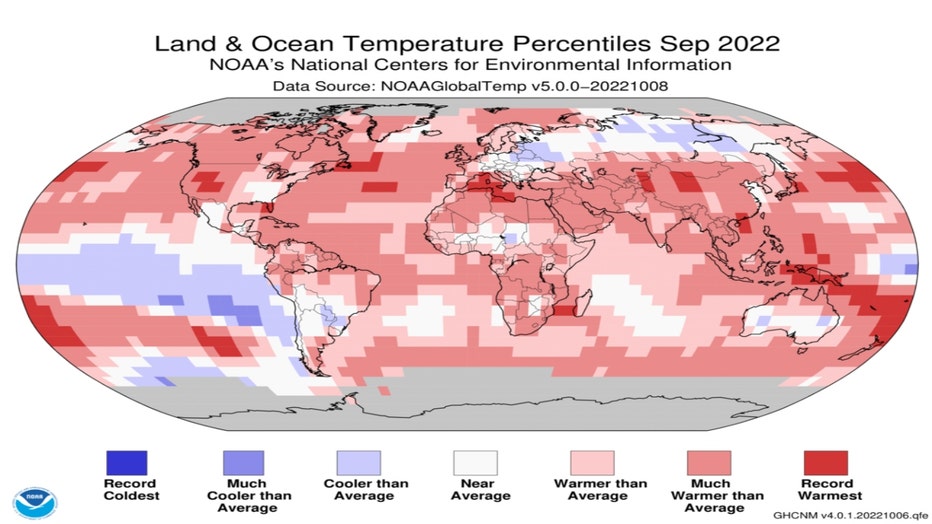
It is a sure bet that 2022 will land among the top ten warmest years on record. NOAA's report breaks down the odds like this:
- <0.1% chance of warmest year
- <5.0% chance of a top 5 year
- >99.0% chance of a top 10 year
- 95% confidence interval of fifth to seventh-warmest year on record
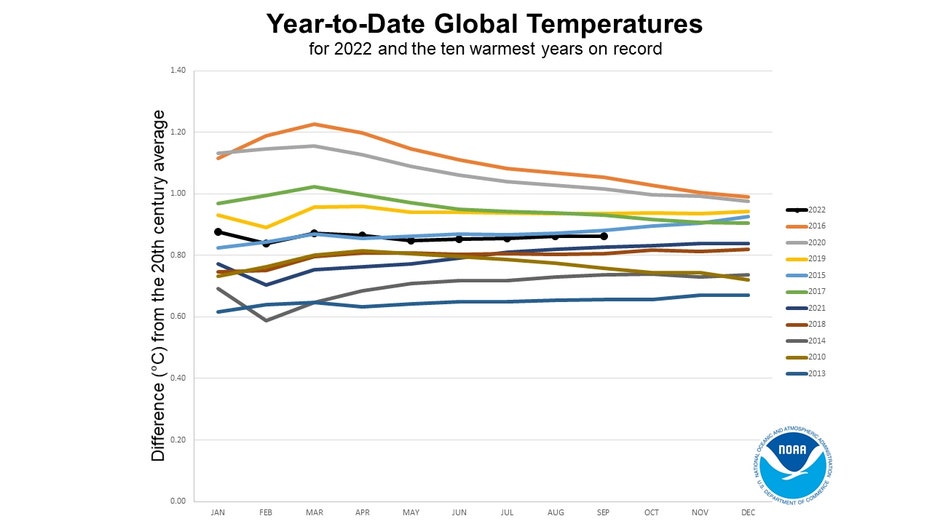
The report highlighted several "significant climate anomalies and events" including devastating floods in Nigeria that killed nearly 300 people and displaced about another 100,000. It also included Hurricane Ian which struck towards the end of September and killed at least 115 people in Florida, more than any hurricane in nearly 90 years.
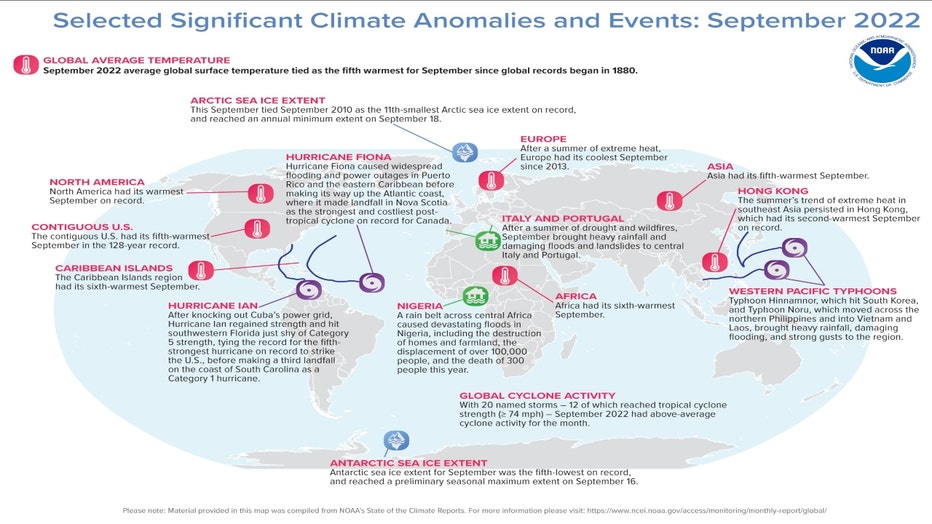
The list of worldwide billion-dollar weather disasters for this year swelled in September. The total now includes at least 29 of them.
NOAA notes that there is a connection between many of these disasters and an earth that continues to warm:
The toll that these events are taking is mounting. While the loss of life is the worst consequence, our world is being impacted in several different ways from this rise in disasters. For example, they can affect academic performance for many years after the disaster strikes.
There is a growing call for companies to put protections in place for employees impacted by extreme weather events. There are even a few tech companies in our country that give their employees paid time off to help them deal with and recover from weather related disasters.
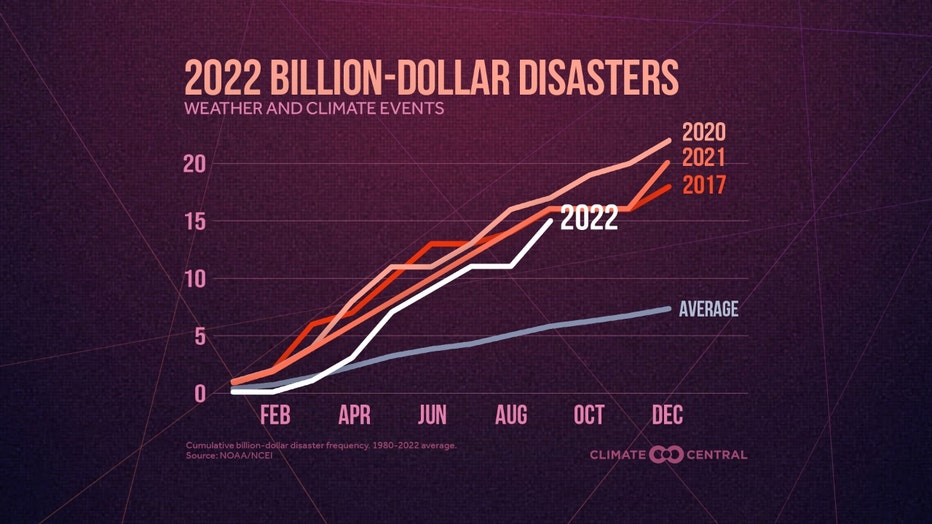
The U.S. has seen 15 billion-dollar weather disasters through September this year. That number already exceeds the historical average of seven events per year.
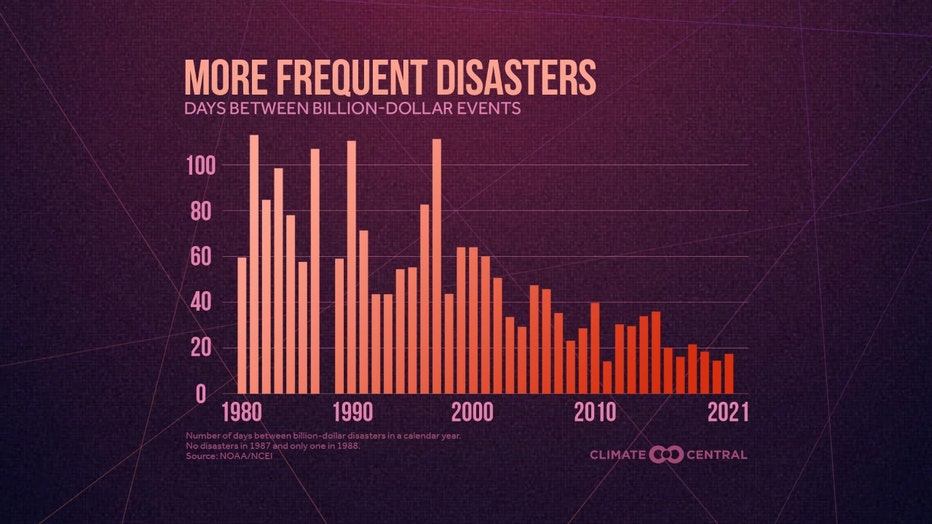
Climate Central reports that the frequency of billion-dollar disasters has increased here significantly in the past forty to fifty years. In the span of the past five years that includes 2017-2021, there were just 18 days on average between billion-dollar disasters. That is much more frequent compared to the average of 82 days between events back in the 1980s.

